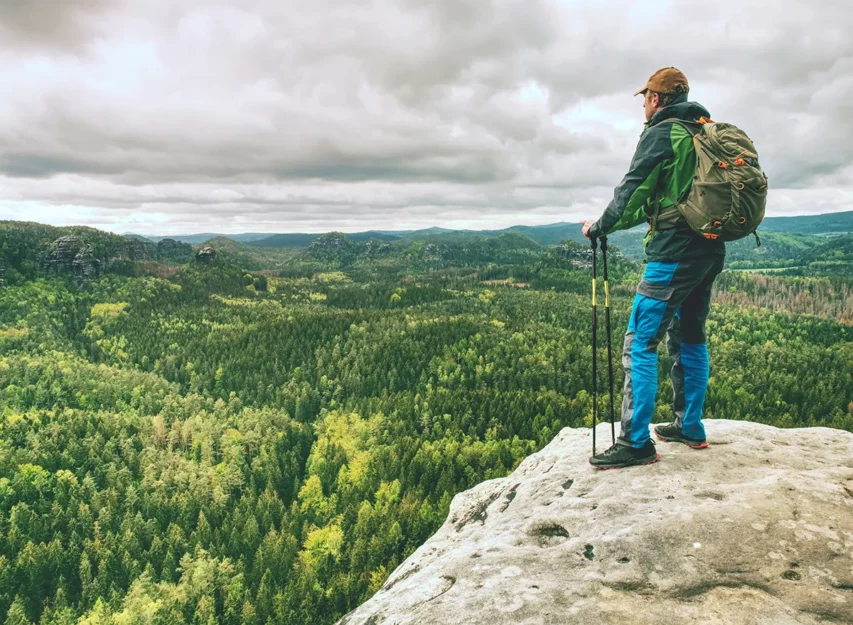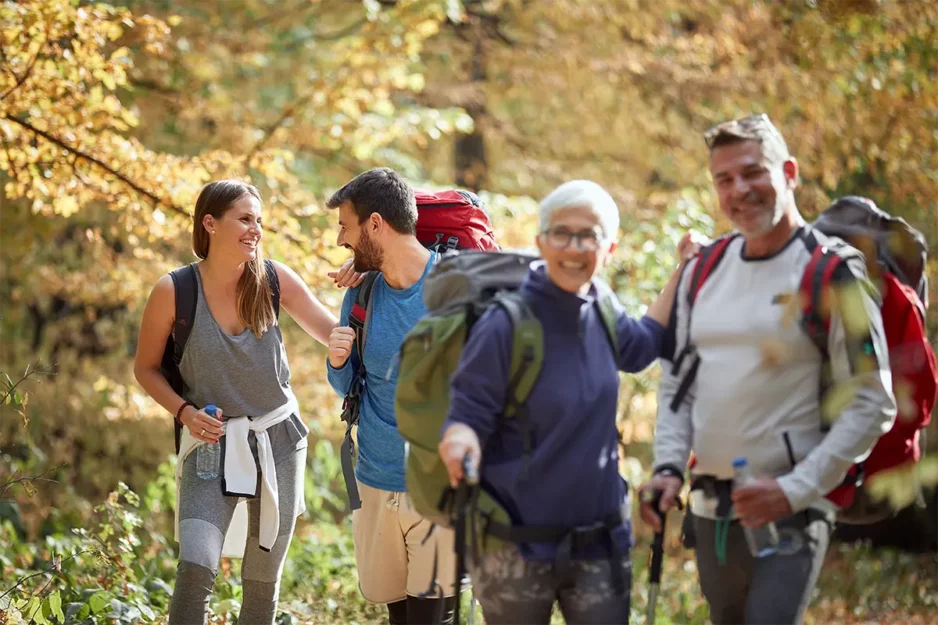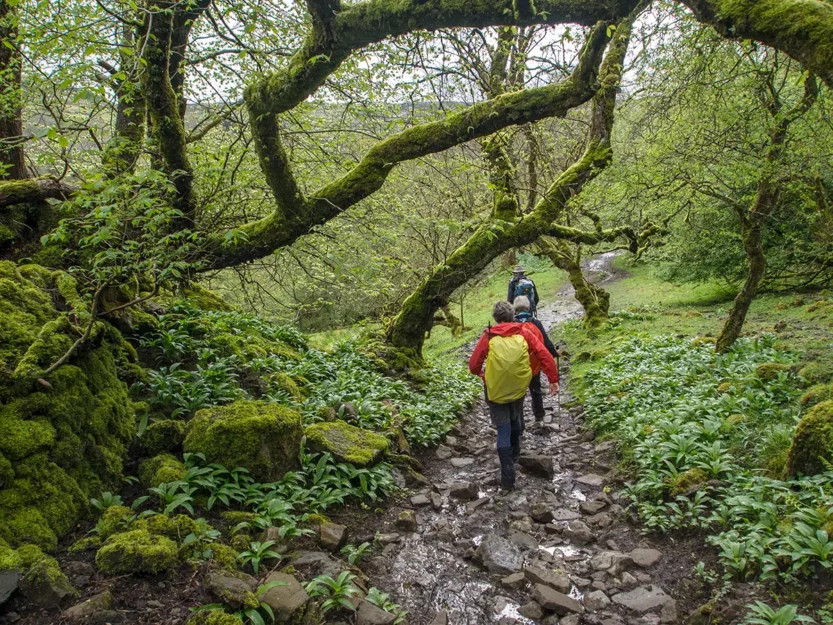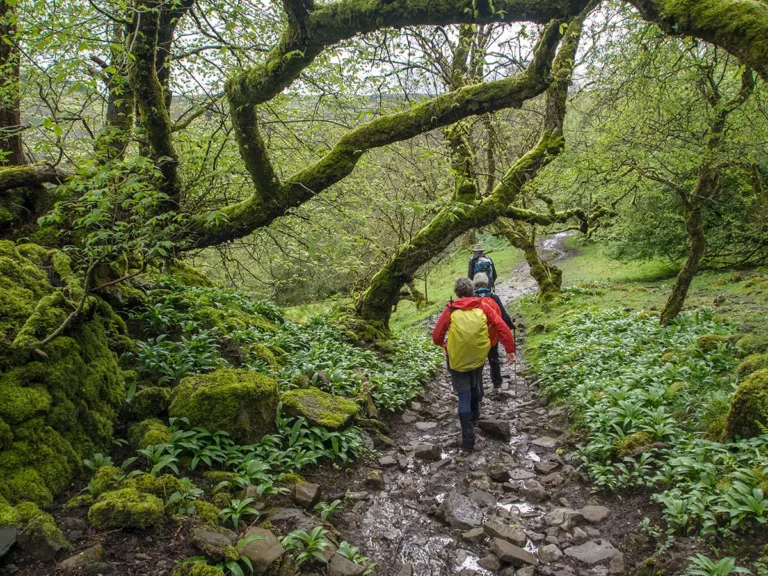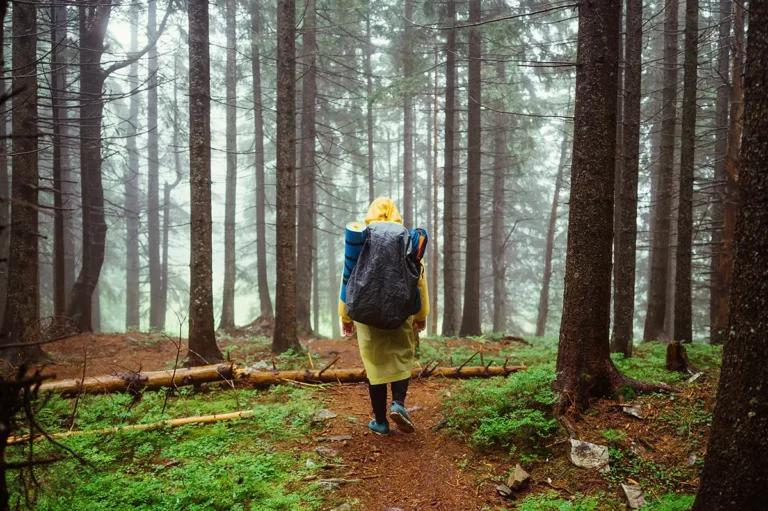To wake up with sore calves after hiking is a right of passage. Even if you’re a seasoned runner or weightlifter, the unique stress hiking places on your calves can have you limping the next day.
When starting a new activity or increasing the intensity of one, muscle soreness is expected.
On average, we take 2,250 steps a mile. If only a third of your 3-mile hike is uphill, you’ve completed over two thousand toe lifts — a far cry from the typical 20-rep set at the gym.
But not all calf soreness happens after hiking. When your calf pain starts during the hike, it can indicate a more severe issue.
This article address calf soreness concerns, preventing sore calf muscles after hiking, and what to do today to ease your calf pain.
Sore calves after hiking
Like a post-weightlifting workout, sore calf muscles should set in 6 to 12 hours after a hike — but can be as long as 48 to 72 hours in extreme cases.
Usually, painful calves come as an unwelcomed morning surprise the day after a hike. Tightening and warmth often accompany muscle pain felt with each step. As you walk around, the calf muscles relax, providing minor relief.
If that sounds like your aching calves, don’t be alarmed. It’s typical and expected, especially for beginner hikers.
When experiencing painful calves during or immediately after a hike, it’s likely not just muscle soreness. The same goes for extreme pain the following day that doesn’t subside through light walking and stretches.
After noticing swelling, discoloration, paleness, or struggle to walk and move due to your pain, contact your doctor.

Causes of painful calves after hiking
When you exercise a muscle, it creates microscopic trauma to the tissue. These tears repair and rebuild, developing stronger muscles. When a muscle is overworked, the tears become larger, causing more severe soreness.
What you’re feeling is inflammation caused by the micro-tears.
If you suffer from leg pain during or directly after a hike, it may be due to one of the following causes:
Muscle cramps
Muscle cramps when hiking are common, especially on trails with steep elevation changes. Cramps typically happen after a muscle is kept in a position for a prolonged period — like hill climbing on your toes. Tired, overworked muscles can also cramp.
To help prevent cramping on a hike, focus on the following:
- Hydration
- Replenishing electrolytes
- Stretching before and after a hike
Narrowed arteries (Claudication)
Muscles depend on blood flow for nutrition, cooling, and lubrication. Claudication, or narrowed arteries, cause pain to muscles during physical fitness due to a lack of blood flow.
Narrowed arteries are most common in people over 50 years of age, with a higher risk from:
- Smoking
- Obesity
- Diabetes
- High blood pressure
- High cholesterol
- Lack of exercise
Muscle strains or tears (pulled muscle)
An injury to the muscle or tendon while hiking may be a muscle strain or tear. A muscle strain is stretching a muscle beyond its limit, while a muscle tear creates a physical tear in the fibrous muscle.
Common symptoms of muscle strains or tears are:
- Bruising or discoloration
- Muscle spasms
- Swelling
- Difficulty moving the muscle
Shin splints
Common in long-distance running, shin splints can also occur along the hiking trail. Typically identified by a constant pain along the front or outside of the shin, shin splints can even cause the front of the shin to be painful to the touch.
Caused by inflammation of the muscles, tendons, and shin bone tissues, treating shin splints is typically done through rest and stretching. At the same time, over-the-counter pain medicines help alleviate the pain.
How to treat aching calves after hiking
You’ve determined your sore calves after hiking is muscle pain. Now, how can you make sore muscles less painful?
Rest and time are the only cure, but there are simple ways to relieve muscle pain.
The American Academy of Family Physicians recommends the following tips to relieve muscle soreness:
- Light stretching
- Massaging the muscle
- Rest
- Ice to reduce inflammation
- Heat to increase blood flow (a warm bath, hot tub, sauna, or shower can help alleviate muscle pain)
- Advil
- IcyHot and Aspercreme
Preventing sore calves on your next hike
Sore calves after hiking are common but not inevitable. By taking the proper precautions, you can wake up the day after a long hike refreshed and ready for your next adventure.
Wear proper footwear
Proper footwear on hikes prevents soreness and injuries while protecting your feet and toes. Yes, the shoes you wear do make a significant impact on your body.
When first getting started hiking, it’s tough to justify investing in hiking boots. On a well-traveled trail, you’re likely to find hikers in cross-trainers, converse, or even flip-flops.
When you decide hiking is a hobby you enjoy, investing in the right pair of boots significantly impacts your hikes.
With proper arch support, cushioning, and support, you’ll find hikes put less stress on your feet and legs, preventing cramps, soreness, and even toe numbness.
Stretch before a hike
Preparing our muscles for hikes is vital. During a hike, your legs and calves will be stretched, twisted, and stressed across rocky trails for miles.
Our bodies are a complex connection of muscles, tendons, and ligaments that benefit from being woken up and loosened before strenuous activities.
Here are some essential calf stretches you can do before hitting the trail:
Toes on wall stretch (toes on car tire if on the trail)
Lunging calf stretch
Heel drop stretch
Standing bent-over-calf stretch
Exercise regularly
Aside from footwear, focus on exercising between hikes. Easy exercises for hiking you can do at home without weights include:
- Jogging
- Air squats
- Lunges
- Elevated toe raises
If you were preparing for a marathon, you would presumably train. Treat hiking similarly.
Eat a healthy diet and stay hydrated
Before a long hike, prepare by eating a healthy diet the day before. Healthy, nutritious meals replenish electrolytes providing your body with the essential minerals it needs to perform. On the day of your hike, eat a high-sodium breakfast and drink lots of water.
A hydrated body cools and lubricates the muscles.
Final thoughts
Like a new gym membership, many new hikers don’t return to the trail after extreme soreness. But each hike makes you stronger and more conditioned to take on more. So don’t stop now.
Sore calves after hiking are a right of passage. Soreness, in general, is something nearly every hiker has and continues to experience.
Once your body adapts, hiking becomes a long, beautiful scenic walk. The best part about hiking is there are countless trails everywhere, and they all have varying degrees of difficulty.
To prepare for your next hike, start by:
- Choosing a flatter, shorter hiking trail
- Eating a nutritious meal before and the day of hikes
- Staying well hydrated
- Stretching before hikes
- Wearing appropriate footwear
- Exercising regularly
The goal of a hike is to enjoy nature while exercising. The quicker you build up your conditioning, the longer your hikes, and the better your experience.
Rest, recover, and get back out on the trail.
Not going to let sore calves stop you from hiking? Share this article to help others and let them know you’re ready!


